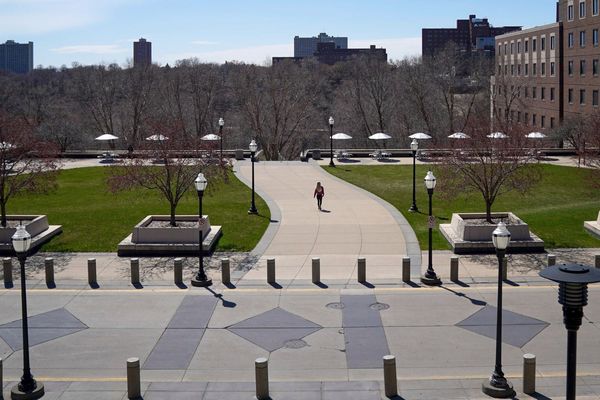In Ridley Scott’s 2015 sci-fi film, The Martian, botanist Mark Watney, who is trapped on the red planet, creates a garden using local soil and the crew’s bio-waste, as well as water from rocket fuel. While vegetable gardens on Mars are still a distant dream, building houses may not be a problem — should humans colonise the planet.
Researchers from the Indian Space Research Organisation (ISRO) and the Indian Institute of Science (IISc) have developed a way to make bricks from Martian soil with the help of bacteria and urea. These ‘space bricks’ can be used to construct building-like structures on Mars that could facilitate human settlement on the red planet, said IISc in a press release.
Their research was published in the peer-reviewed open access scientific journal, PLOSOne. The team first made the slurry by mixing Martian soil with guar gum, a bacterium called Sporosarcina pasteurii, urea and nickel chloride (NiCl 2). “This slurry can be poured into moulds of any desired shape, and over a few days the bacteria convert the urea into crystals of calcium carbonate. These crystals, along with biopolymers secreted by the microbes, act as cement holding the soil particles together,” stated the release.
This method ensures that the bricks are less porous, which was a problem with other methods used to make Martian bricks. “The bacteria seep deep into the pore spaces, using their own proteins to bind the particles together, decreasing porosity and leading to stronger bricks,” said Aloke Kumar, associate professor, Department of Mechanical Engineering at IISc, and one of the senior authors of the paper.
The slurry-casting method was developed with the help of Koushik Viswanathan, assistant professor in the Department of Mechanical Engineering, IISc.
In the past, the team had made bricks out of lunar soil using a similar method. However, the previous method could only produce cylindrical bricks, while the current slurry-casting method can also produce bricks of complex shapes, the release stated.
Another challenge was the composition of Martian soil, which has a lot of iron that causes toxicity to organisms. “In the beginning, our bacteria did not grow at all. Adding nickel chloride was the key step in making the soil hospitable to the bacteria,” said Kumar.
The team is now gearing up to investigate how the atmosphere in Mars combined with low gravity affects the ‘space bricks’. Martian atmosphere is a hundred times thinner than that of Earth’s, and contains over 95% carbon dioxide, which may significantly affect bacterial growth, stated the release. To recreate conditions on the red planet, researchers have constructed a device–MARS (Martian AtmospheRe Simulator).
As per the release, the team has also developed a lab-on-a-chip device that aims to measure bacterial activity in micro-gravity conditions. “The device is being developed keeping in mind our intention to perform experiments in micro-gravity conditions in the near future,” said Rashmi Dikshit, a DBT-BioCARe Fellow at IISc and first author of the study, who had also previously worked on the lunar bricks. With ISRO’s help, the team plans to send such devices into space, so that they can study the effect of low gravity on the bacterial growth.







